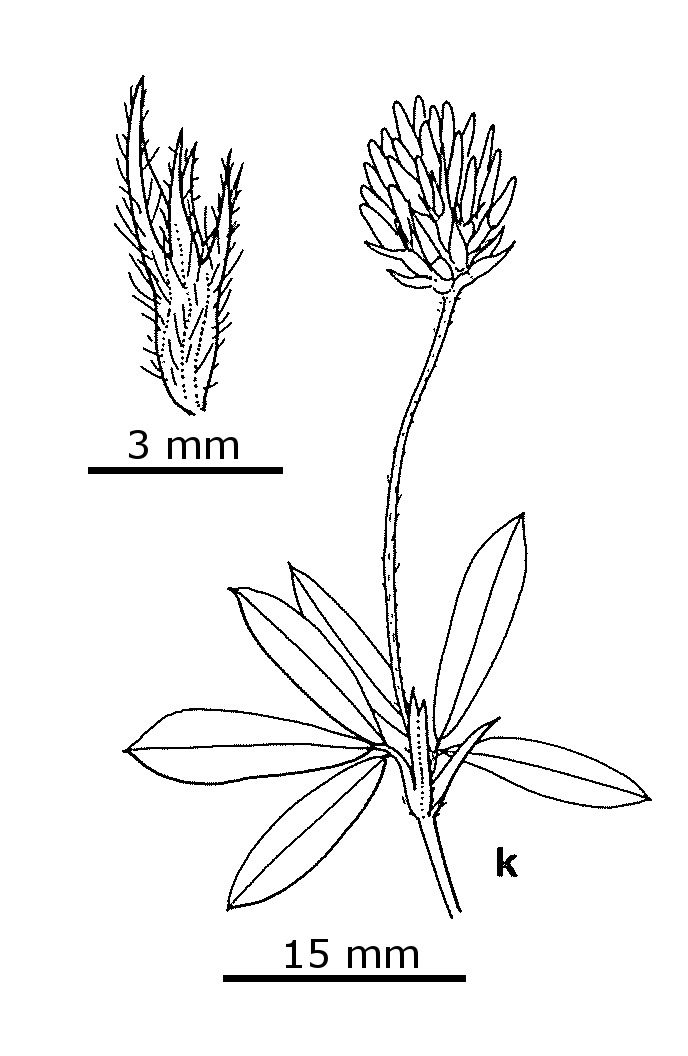Trifolium squamosum
L. Sea CloverErect or ascending annual herb; stems few to many, 10–50 cm long, appressed-hairy to glabrescent. Leaves palmately trifoliolate, short- to long-petiolate; leaflets obovate, oblong or lanceolate, 10–25 mm long, 3–8 mm wide, appressed-hairy, entire or minutely dentate on distal margins, apex acute, obtuse or retuse, mucronate; stipules membranous, veined, hairy. Inflorescence many-flowered, apparently terminal, ovoid, 10–20 mm long, 10–15 mm wide, pedunculate; flowers sessile. Calyx 5–6 mm long; tube obconic or campanulate, 10-veined, glabrous or glabrescent, throat closed by callosity, teeth equal or unequal, lower 1 often longer than tube, others shorter than or as long as tube, long-ciliate, stellately spreading in fruit; corolla 7–9 mm long, white or pale pink, not persistent; standard oblong, retuse. Pod ovoid, 2–3 mm long, membranous, included in calyx tube; seed 1, ovoid, c. 2 mm long, brown or blackish. Flowers Oct.–Jan.
Also naturalised SA, Tas. Native northern Africa, Europe, western Asia. Known in Victoria from a single 1956 collection from Codrington in the Portland district.
Jeanes, J.A. (1996). Fabaceae. In: Walsh, N.G.; Entwisle, T.J., Flora of Victoria Vol. 3, Dicotyledons Winteraceae to Myrtaceae, pp. 663–829. Inkata Press, Melbourne.
 Spinning
Spinning

